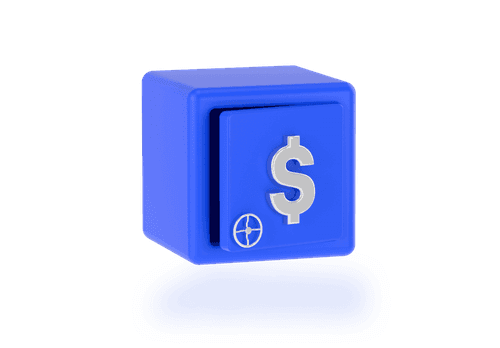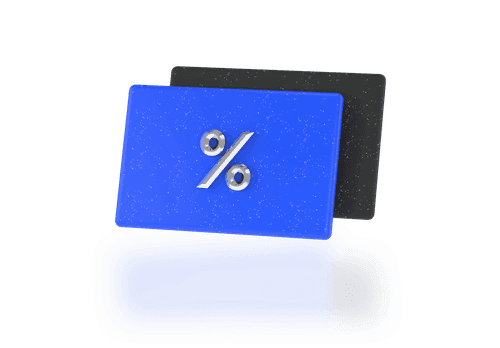Intermediate
Introduction to Digital Currencies Trading

The world of cryptocurrency trading has captured the attention of investors globally, offering a realm filled with unique opportunities and notable volatility. At the heart of this digital revolution is blockchain technology, a groundbreaking innovation that underpins cryptocurrencies like Bitcoin and Ethereum.
One of the most compelling tales in the crypto universe is the meteoric rise of Bitcoin, which has seen an increase of more than 19,500% in value over its lifespan. Such unprecedented growth has turned many early adopters into millionaires, drawing a vast array of investors eager to explore these new waters.
Today, cryptocurrency trading is more accessible than ever. An increasing number of brokers are incorporating these digital assets into their platforms, and our company, nomo, stands at the forefront of this trend. At nomo, we offer the opportunity for everyone, from novices to seasoned traders, to engage in crypto trading under favorable conditions. Whether it's Bitcoin, known for its pioneering status and market dominance, or Ethereum, renowned for its innovative blockchain technology and smart contracts, our platform provides a gateway to these exciting markets.
In this article, we will delve into the intricacies of cryptocurrency trading. From understanding the basics of blockchain technology to navigating the volatile waters of the crypto market, we aim to provide you with comprehensive insights.
What is Cryptocurrency Trading?
Cryptocurrency trading is the act of speculating on cryptocurrency price movements via a CFD (Contract for Difference) account, or buying and selling the underlying coins via an exchange. CFD trading is particularly popular in the crypto world due to its flexibility and the potential for high returns.
How it Works
When you trade a cryptocurrency CFD, you’re speculating on the price movement of the digital currency without actually owning it. If you think the price of a cryptocurrency will rise, you open a ‘buy’ position, and if you expect it to fall, you open a ‘sell’ position. This method allows traders to potentially profit from both rising and falling markets.
Leverage
One of the key features of CFD trading is the use of leverage. Leverage allows you to gain a large exposure to a cryptocurrency market while only tying up a relatively small amount of your capital. In essence, you’re borrowing money to increase your bet size. However, it's important to remember that while leverage can amplify your profits, it can also magnify your losses.
Margin
This is the amount of capital required in your account to open and maintain a leveraged position. There are two types of margin: the deposit margin needed to open the position and the maintenance margin required to keep the position open. Margin trading allows traders to open larger positions than their capital would otherwise permit, but it also adds an element of risk.
Some of the most popular cryptocurrency pairs for trading include BTC/USD (Bitcoin/US Dollar), ETH/USD (Ethereum/US Dollar), and LTC/USD (Litecoin/US Dollar). These pairs are widely traded and are known for their liquidity and volatility.
Trading Examples
If a trader believes that the price of Bitcoin will rise against the US dollar, they might open a ‘buy’ CFD position on the BTC/USD pair. If the market moves in their favor, they make a profit; if not, they incur a loss.
Conversely, if the trader believes the price of Ethereum will fall against the US dollar, they could open a ‘sell’ position on the ETH/USD pair.
Cryptocurrency trading, especially through CFDs, offers a flexible and dynamic way to participate in the growing digital currency market. It requires an understanding of market trends, leverage, and risk management. As with any trading, there's potential for both profit and loss, and it's crucial for traders to have a well-thought-out strategy and a clear understanding of the volatile nature of the crypto market.
How Do Cryptocurrency Markets Work?
Cryptocurrency markets are unique compared to traditional financial markets in several ways. One of the most notable differences is their operational timeline. Unlike the stock market, which operates within specific hours and days, cryptocurrency markets function 24/7. This around-the-clock trading provides continuous opportunities for traders but also requires them to be vigilant about market changes at any time.
At the core of cryptocurrency markets is blockchain technology. Blockchain is a decentralized ledger that records all transactions across a network of computers. This technology ensures transparency and security, making it nearly impossible to alter any recorded information. Each transaction added to a blockchain is called a 'block', which is verified and then linked to the previous block, forming a chain of blocks – hence the term 'blockchain'.
Mining is another integral part of how cryptocurrencies function. It involves using powerful computers to solve complex mathematical problems that validate and record transactions on the blockchain. As a reward for this work, miners receive newly minted cryptocurrency, which is how new coins are introduced into circulation.
The price of cryptocurrencies is largely driven by supply and demand dynamics. Factors influencing this include investor sentiment, market demand, media influence, technological advancements, regulatory news, and broader economic factors. For example, if a large company announces they will accept Bitcoin as payment, this might increase demand and, consequently, the price of Bitcoin. Similarly, regulatory news can either positively or negatively impact the market sentiment, leading to price fluctuations.
Another unique aspect of cryptocurrency markets is their volatility. Prices can experience significant swings within short periods, making them both potentially profitable and risky for traders. This volatility is partly due to the relatively nascent nature of the market, evolving technology, and varying degrees of liquidity across different cryptocurrencies.
How to Trade Crypto?
Trading cryptocurrencies can be an exciting venture, but it requires a well-thought-out strategy and a clear understanding of the market. Here are some key aspects to consider:
Popular trading strategies:
- Day Trading: This involves buying and selling cryptocurrencies within the same trading day. Day traders capitalize on short-term market movements.
- Swing Trading: This strategy focuses on taking advantage of price 'swings' in the market over several days or weeks.
- Scalping: This is a quick, high-frequency trading strategy aimed at making small profits from minor price changes.
- Buy and Hold: Known as a long-term investment strategy, where you buy and hold cryptocurrencies, anticipating they will increase in value over time.
The importance of selecting the right broker cannot be overstated. A reliable broker offers a secure trading environment, transparent pricing, and reasonable fees. When trading cryptocurrencies, you need a platform that can handle the fast-paced nature of the market.
Our brokerage company, nomo, provides favorable conditions for trading cryptocurrencies. To get started, you need to:
- Register: Sign up with nomo to create an account.
- Navigate to Dashboard: Access your dashboard to get an overview of the market.
- Select 'Trading' Section: Here, you will find all the trading tools and options.
- Choose 'Crypto' Assets Category: nomo offers a diverse range of over a hundred different cryptocurrency assets for trading.
- Start Trading: You can begin trading with a deposit as low as $250. Our platform ensures low commission fees, making it more accessible and cost-effective for traders.
With nomo, we aim to make cryptocurrency trading as straightforward and profitable as possible. Whether you're a seasoned trader or just starting out, our platform is designed to provide you with all the necessary tools and support to navigate the crypto market effectively.



















